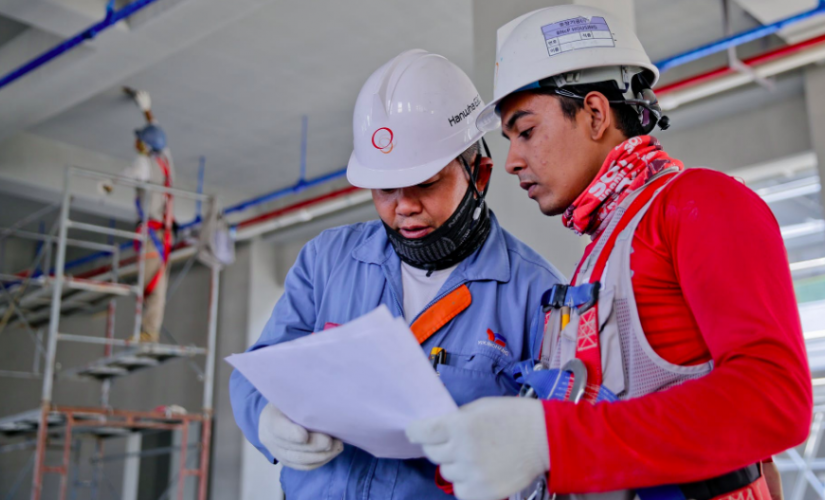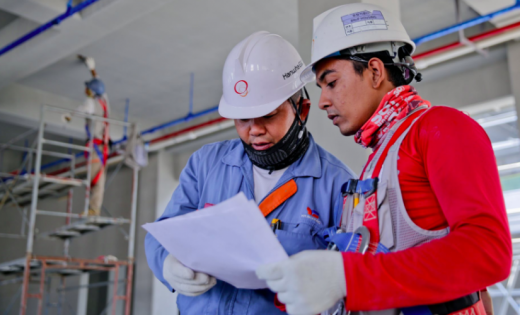Massive Non-Desk Workforce is an Opportunity for Entrepreneurs
Massive Non-Desk Workforce is an Opportunity for Entrepreneurs

When you think of the typical workplace, you probably imagine an office filled with employees seated at desks, working on computers or talking on the phone. Maybe you see a conference table surrounded by execs, a Keynote presentation holding their gazes. These scenes don’t just appear in stock photos, of course. They can be found in office buildings all over the world. Here’s why the massive non-desk workforce is an opportunity for entrepreneurs.
Yet for most of the global working population, the workplace isn’t an office at all.
Enterprise cloud venture capital firm Emergence reports that 2.7 billion employees, or 80% of the world’s workers, comprise the non-desk workforce. They work in factories or labs, on farms or construction sites, or from trucks or airplanes.
Thus far, they’ve been mostly overlooked by technology companies seeking to make work easier and more productive. Only 1% of software venture funding has been going to non-desk technology companies, but that’s starting to change.
Growth and Opportunity
The needs of these workers vary dramatically from the needs of the people making office applications and productivity tools. Fortunately, the technology industry is starting to realize this. According to Emergence’s 2018 survey, spending on technology for non-desk workers is increasing, led by companies in the transportation and manufacturing sectors.
Any entrepreneur with experience pitching investors knows that VCs want to back companies serving large markets. There’s ample room for growth if the majority of people can benefit from your solution. There’s still plenty of opportunity in the non-desk sector; the race to win these customers has only begun. If you’re seeking to capture a portion of this market, embrace these strategies.
1. Help them communicate.
Messaging apps like Slack or Microsoft Teams are great, but many non-desk workers don’t even have corporate email IDs. If you want to build something they can use, think about how they currently communicate. Most non-desk workers use their mobile devices to stay connected with colleagues and managers. Custom applications that improve the way workers talk to each other — or the way executives communicate with employees at scale — might be especially useful.
InterContinental Hotels and Resorts in Miami uses Beekeeper, a workforce communications platform, to keep its employees updated with vital information. When Hurricane Irma was barreling toward Florida in 2017, for example, cell reception was spotty.
The private communications platform allowed the company to alert staff via the Wi-Fi of the storm’s location. They could notify staffers of closures and ensure they received important safety information.
2. Boost retention by enabling their ongoing training.
Recruiting and retention are major pain points for companies that rely on a primarily non-desk workforce. Turnover among remote workers tends to be much higher, which means companies relying on them must have efficient hiring processes. Tools like Workstream, a platform for sourcing, screening, and onboarding hourly employees, help companies get the right people for the job, but keeping them isn’t always easy.
Remote and non-desk workers need (sometimes extensive) coaching and training in order to do their work properly; they typically receive that instruction during the onboarding process. Unfortunately, non-desk workers don’t always get the ongoing teaching and development that their “desk-counterpart” employees receive.
Non-desk employees need these opportunities to grow professionally. Technology can help fix this problem. uStudio, for instance, offers a platform for private business podcasts so workers can learn via audio while on the job.
3. Keep them out of harm’s way.
Some non-desk workers do their jobs in environments that can be dangerous if the right precautions aren’t taken. There’s a reason people working at construction sites, factories, and oil rigs wear safety gear and are subject to strict safety standards. These job sites often involve heavy equipment, dangerous chemicals, and other hazards that workers in office jobs rarely have to worry about.
Hard hats and other gear reduce safety hazards, but worker connectedness is key for onsite alerts and remote manager awareness. Honeywell and Intel have developed a wearable solution for factory workers and first responders that reports critical data back to managers.
Heart rate monitors, activity detection devices, toxic gas monitors, and other wearable sensors collect data on a worker’s breathing, heart rate, toxic gas exposure, and other vitals. The right technology, as well as thorough emergency planning, will equip companies to respond quickly to safety crises.
Opportunities abound for startups that can meet the needs of non-desk workers and the companies that employ them. Of course, this portion of the global workforce is far from monolithic, meaning solutions may have to be customized with the needs of specific job functions in mind. Some problems, however, are more universal, and entrepreneurs who can help solve them have a good chance of succeeding in their next pitch meeting.
The post Massive Non-Desk Workforce is an Opportunity for Entrepreneurs appeared first on ReadWrite.
(37)


